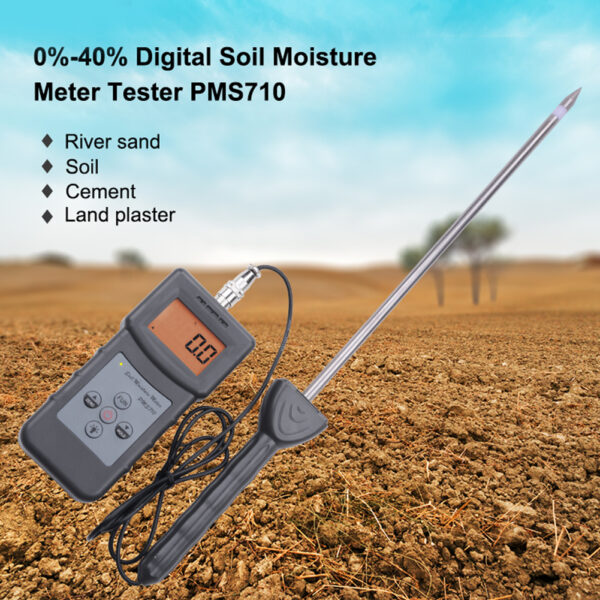Recognizing the Various Kinds Of Moisture Meters and Their Applications
Recognizing the Various Kinds Of Moisture Meters and Their Applications
Blog Article
Delve Into the World of Wetness Meters: Whatever You Need to Know
In the world of moisture meters exists a globe of precision and usefulness that usually goes unnoticed. Understanding just how moisture meters operate, the different kinds available, and their varied uses can shed light on their value in guaranteeing quality and performance.
How Dampness Meters Work
Dampness meters operate by measuring the electric conductivity or capacitance of materials to establish the wetness content existing - Moisture Meter. These meters are important tools throughout various industries, consisting of construction, farming, and woodworking. By making use of different approaches such as pin-type or pinless modern technology, wetness meters give precise analyses that help experts make notified choices
Pin-type moisture meters function by putting the sharp pins into the product being evaluated. The electric conductivity between the pins is then measured, with higher wetness degrees causing raised conductivity. On the other hand, pinless dampness meters use electro-magnetic signals to scan a larger area without creating any damage to the material's surface area. These meters are optimal for rapidly examining dampness levels in big locations or completed items.
No matter of the approach utilized, wetness meters play a critical role in preventing issues such as mold and mildew growth, architectural damages, or product issues brought on by excess dampness. Recognizing exactly how these meters job is crucial for making certain the top quality and honesty of products in different applications.
Sorts Of Moisture Meters
Provided the crucial duty dampness meters play in different industries, it is important to comprehend the different kinds offered to professionals for properly examining moisture degrees. There are mainly two primary kinds of dampness meters: pin-type and pinless dampness meters.
Pin-type wetness meters utilize 2 pins that are inserted right into the material being checked to measure the electric resistance between them. This approach is typically made use of for wood, drywall, and various other building materials. Pin-type meters provide exact analyses at particular midsts, making them suitable for identifying wetness slopes.
On the other hand, pinless dampness meters use electro-magnetic sensor plates to check a bigger area of the material without creating any damages. This kind is suitable for swiftly scanning large areas and is frequently used for flooring, wall surfaces, and ceilings. Pinless meters are hassle-free for taking readings on completed surface areas without leaving any visible marks.
Both sorts of moisture meters have their advantages and are picked based upon the specific demands of the task handy. Understanding the differences in between these kinds is crucial for professionals to make precise wetness analyses.
Applications Throughout Industries
Building professionals depend on dampness meters to evaluate the wetness degrees in building products like drywall, concrete, and timber, which is crucial for preserving architectural integrity and protecting against issues like rot or mold. The floor covering industry utilizes wetness meters to measure the wetness web content in subfloors before setting up numerous floor coverings, stopping pricey damages due to excess wetness. In the food sector, wetness meters are utilized to check and control moisture levels in items my blog such as grains, nuts, and dried out fruits to keep freshness and top quality.
Tips for Using Wetness Meters
When determining the dampness web content in numerous materials,Use the moisture meter's calibration settings to guarantee precise analyses. Calibration is critical for the correct functioning of a moisture meter. Before each use, it is a good idea to examine and readjust have a peek here the calibration setups according to the particular material being checked. In addition, ensure the meter is readied to the proper moisture variety for the material you are determining to acquire one of the most precise results.

When using a pin-type dampness meter, place the pins to the suitable deepness recommended for the product being evaluated. This makes sure that the dampness analyses are extracted from the proper deepness within the material, offering a more accurate depiction of its wetness material. For pinless moisture meters, remember to keep correct contact with the material's surface area to obtain trustworthy readings.

On a regular basis inspect and change the batteries in your wetness meter to prevent imprecise readings as a result of low power. When not in use to lengthen its life expectancy and keep its accuracy, Shop the meter in a completely dry and risk-free area. By following these pointers, you can take full advantage of the efficiency of your wetness meter and get precise wetness web content measurements throughout various materials.

Maintenance and Calibration
To make certain the accuracy of dampness material dimensions, routine upkeep and calibration of the wetness meter are essential actions in its proper functioning. Upkeep includes maintaining the moisture meter tidy and totally free from particles that could impact its analyses. It is essential to adhere to the producer's guidelines for cleansing to avoid damages to the device. Furthermore, normal calibration is necessary to confirm the precision of the readings. see page Calibration changes the dampness meter to ensure that it offers regular and dependable results.
Calibration should be performed regularly, particularly if the wetness meter is utilized regularly or in essential applications where precise measurements are required. Many moisture meters come with calibration tools or can be calibrated by professional services - Moisture Meter. It is recommended to keep a log of calibration dates and results to track the efficiency of the dampness meter with time. By maintaining and calibrating the moisture meter consistently, customers can rely on the precision of the wetness material measurements obtained.
Conclusion
In verdict, wetness meters play an important role in numerous markets by accurately gauging the wetness material of materials. Recognizing how these tools function, the different kinds available, and proper upkeep and calibration are necessary for obtaining trusted results. Whether in production, farming, or building, making use of moisture meters aids ensure quality assurance and efficiency in processes.
Building specialists rely on wetness meters to assess the wetness degrees in structure materials like drywall, timber, and concrete, which is essential for keeping architectural stability and stopping concerns like rot or mold. The flooring market makes use of moisture meters to measure the wetness web content in subfloors prior to mounting various floor coverings, protecting against pricey damages due to excess moisture.Use the dampness meter's calibration setups to ensure accurate readings when determining the wetness web content in numerous products. By adhering to these tips, you can optimize the efficiency of your dampness meter and get precise moisture content measurements across different materials.
In conclusion, moisture meters play an important function in different markets by precisely determining the wetness material of materials.
Report this page